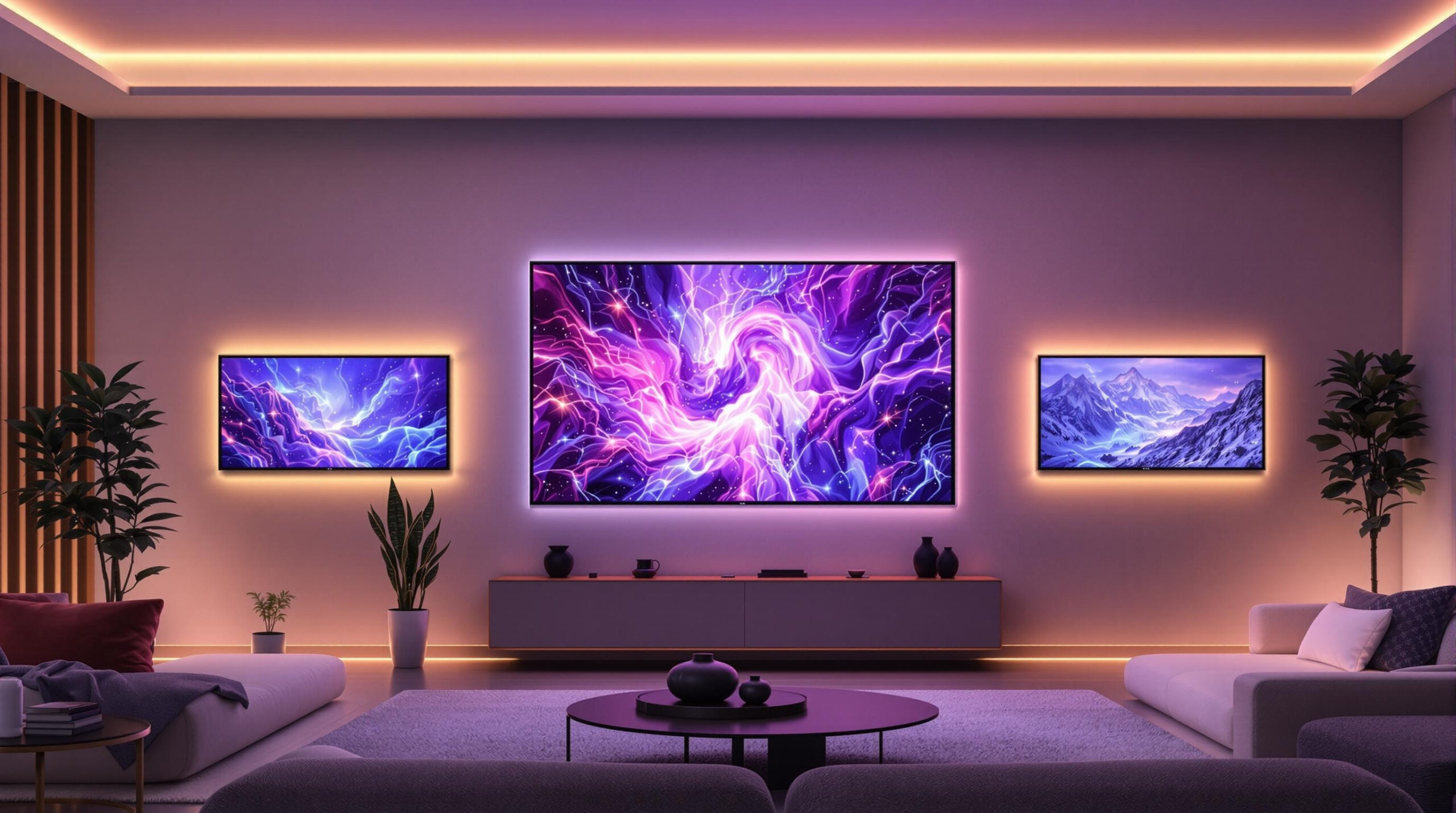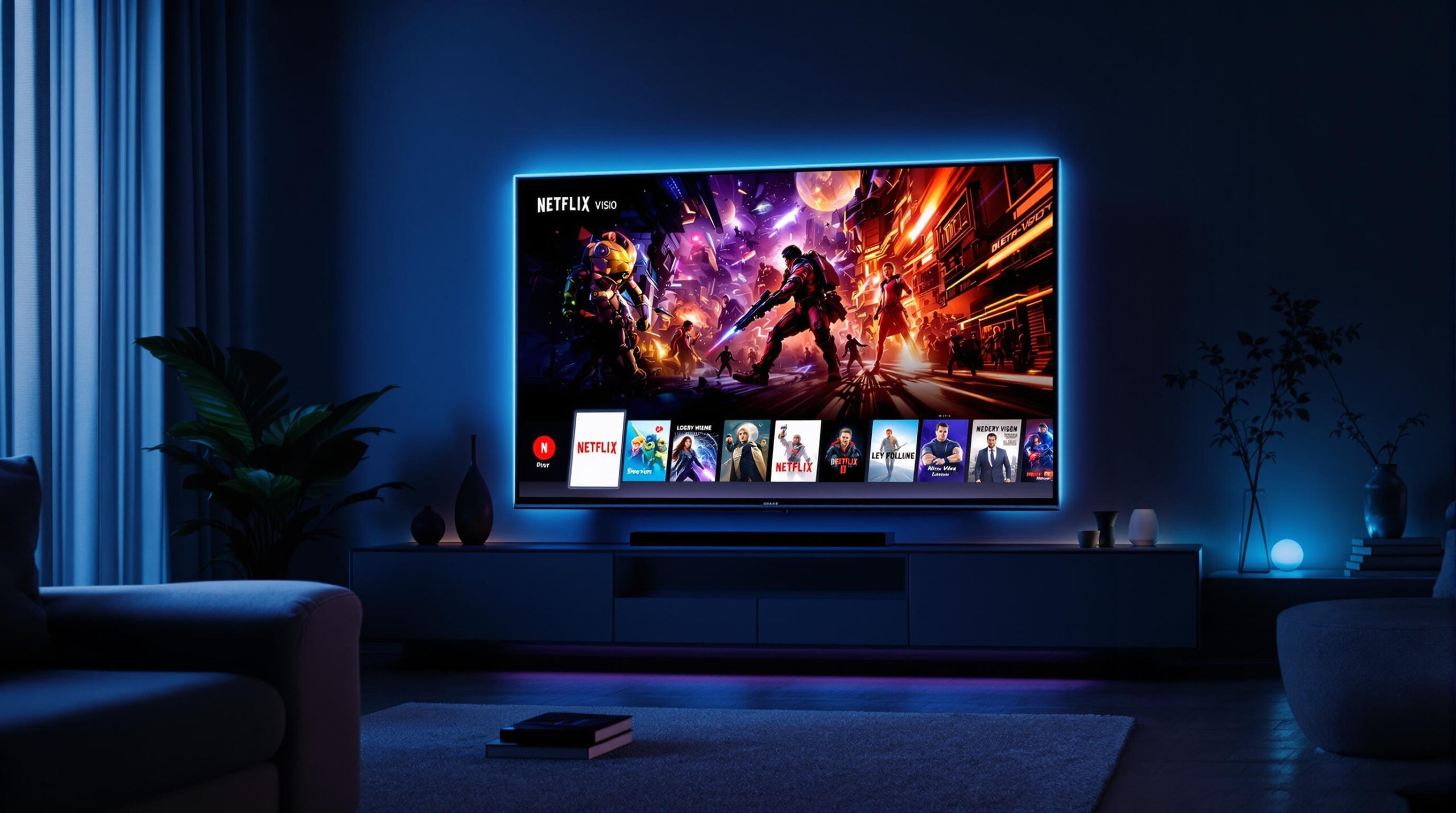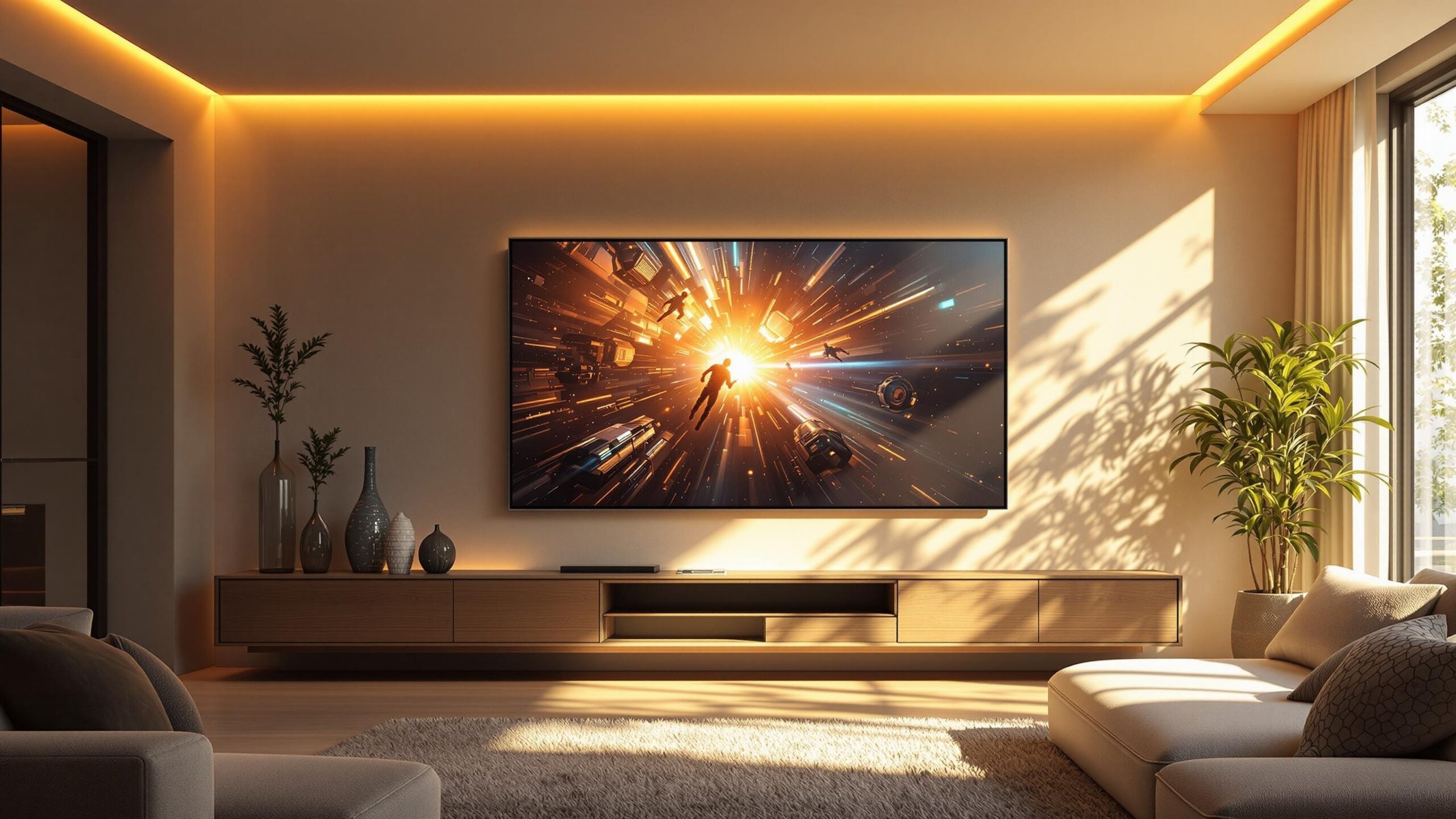Introduction: The New Life of the “Off” Switch
Walk into any stylish living space from a glossy magazine spread and you will notice a conspicuous absence: the cold, black rectangle that dominates most living-room walls when a TV is off. In 2025, the best LED TVs have all but erased that visual void by adopting sophisticated Ambient Mode and screensaver features. No longer an inert slab, the modern television morphs into framed art, animated décor, or an information hub whenever regular programming ends. If you crave a display that pulls double duty as both entertainment powerhouse and aesthetic showpiece, read on—this guide unpacks the science, style, and standout models rewriting the rules of what a TV can be even while “idle.”
The Rise of Ambient Mode: A Marriage of Design and Technology
Ambient Mode was born from two converging trends: homeowners’ desire for seamless interiors and engineers’ ambition to keep screens useful around the clock. Using light sensors, color-mapping software, and low-power display algorithms, an Ambient-enabled TV recreates wall textures, cycles curated art collections, or projects tranquil motion loops that match your décor. These visuals run at reduced refresh rates and dimmed backlight levels, so energy consumption stays minimal while image retention remains a non-issue for LED panels. The result is a device that blends effortlessly into its surroundings yet springs to cinematic brilliance at the push of a button—perfect for open-concept lofts, multipurpose media rooms, or any household where technology must serve both form and function.
Screensaver Software Evolves: From Slideshows to Smart Canvases
Yesterday’s rudimentary slideshow has matured into AI-driven galleries that adjust brightness, palette, and content based on time of day, local weather, or user profile. Smart platforms like Samsung Tizen, LG webOS, Sony Google TV, and Roku/Fire TV now offer built-in art stores, animated nature scenes, and data visualizations ranging from calendars to fitness stats—all optimized for LED backlighting. Because these TVs leverage quantum-dot films and Mini-LED arrays, static images appear saturated yet subtle, while slow-moving particles or brush-stroke animations prevent any single pixel from remaining locked too long. By coupling these visuals with motion sensors that power the panel down when no one is present, manufacturers strike a balance between décor and efficiency.
Core Features That Separate Good from Great
Before comparing brands, it’s helpful to list the must-have specs that guarantee a satisfying ambient experience. Look for at least one dedicated low-brightness mode under 200 nits, a matte or anti-reflective coating to mimic canvas texture, and a full array or Mini-LED backlight with local dimming to preserve black levels during dark artwork. Integrated light and presence sensors are critical so the display can auto-tune color temperature and shut off when you leave the room. Finally, an extensive content ecosystem is pivotal: whether it’s Samsung’s Art Store, LG’s Always Ready gallery, or Sony’s Living Decor library, more licensed artwork means a higher likelihood you’ll find pieces that complement your interior style.
Samsung Neo QLED & The Frame: Gold Standard of Disappearing Displays
Samsung pioneered the art-screen concept with The Frame, and its 2025 edition expands color volume to 100 percent of the DCI-P3 space and slashes screen glare by 95 percent thanks to a new “Muse Matte” finish. A slim One Connect cable routes power and data through a single translucent line, letting the panel hang flush like a genuine painting. Ambient Mode+ on Samsung’s flagship Neo QLEDs—QN90D, QN85D, and QN80D—adds dynamic décor widgets: subtle particle clouds that match wall hues, live headlines, or synchronized mood lighting via SmartThings. Hundreds of magnetic bezel options let you swap from walnut gallery frame to modern white in seconds, ensuring the set evolves with seasonal décor shifts.
LG QNED & Gallery Series: An Ultra-Thin Canvas with AI Flair
LG’s answer is the Gallery Design QNED90T, a Mini-LED TV that mounts with zero-gap hardware, creating the illusion of a digital mural. Always Ready mode overlays art, photo albums, or translucent dashboard widgets atop a softly animated backdrop. Because the α9 Gen 7 AI processor continuously samples room luminance, each brush-stroke maintains painterly contrast from dawn to dusk. Through LG ThinQ integration, you can tell the TV, “Show me Bespoke Collection,” and webOS instantly fills the screen with curated abstracts or Renaissance masters at near-paper pixel density. For households using Apple devices, AirPlay 2 lets you cast high-resolution ProRAW photos as ambient backgrounds in seconds.
Sony BRAVIA XR Living Decor: Cognitive Processing Meets Curated Calm
Sony’s BRAVIA XR lineup—led by the X95L Mini-LED—employs the Cognitive Processor XR to analyze what your eyes naturally focus on, subtly sharpening focal areas within ambient art. Living Decor mode presents animated illustrations, time-lapse skylines, or meditative particle flows that adapt hue based on the dominant tones in your room. Pair a BRAVIA CAM and the TV learns your traffic patterns, dimming or muting visuals when you exit, then returning with gently animated screensavers when you re-enter. Sony’s partnership with the Google Art & Culture platform also provides a revolving exhibition of world-class paintings, making the screen a portal to renowned museums.
TCL Google TV Ambient Dashboard: Affordable Artful Display
Cost-conscious decorators aren’t left out. TCL’s QM8 and Q7 series bundle an Ambient Dashboard inside Google TV that pulls slideshow themes from Google Photos, YouTube Fireplace streams, or third-party art apps. Though the matte finish isn’t quite as refined as Samsung’s, the combination of quantum dots and high peak brightness lets paintings and motion graphics pop even in sun-lit rooms. A budget-friendly “Match My Wall” option snaps a smartphone photo, samples the dominant hue, and generates an abstract gradient loop that melts seamlessly into the background—ideal for renters who want a quick décor hack without bespoke mounting costs.
Hisense ULED ArtView: Utility Meets Animation
Hisense’s U8N and U7N sets use the Hi-View Engine Pro to produce ultra-wide color gamuts in both full HDR and Eco Ambient Mode, which caps brightness around 150 nits to curb energy draw. ArtView offers more pragmatic screensavers: calendar overviews, weather radar, or Spotify-synced audio visualizers that pulse softly in time with your playlist. Because these TVs support Alexa and Google Assistant natively, you can ask, “Show beach sunrise photos,” and get a curated coastal slideshow within moments. For game rooms, animated pixel art loops or retro arcade marquees keep vibes alive when the console goes idle.
Choosing the Right Ambient TV for Your Space
Start by assessing wall color, natural light, and viewing distance. If you have floor-to-ceiling windows, a high-brightness Mini-LED model with a matte finish—think Samsung QN90D or LG QNED90T—will prevent washed-out pastels. Minimalist interiors often benefit from ultra-thin wall-mount designs like LG’s Gallery series, while eclectic spaces may lean on Samsung’s swappable bezels for seasonal flair. Content ecosystems also matter: Samsung boasts the largest paid art store, Sony leverages Google’s cultural cachet, and LG excels at personal photo galleries with voice-controlled transitions. Budget shoppers might prioritize TCL or Hisense for 85-inch scale without the luxury price tag, accepting a slightly glossier screen in exchange.
Installation and Calibration Tips for Flawless Illusion
To maximize the “disappearing act,” mount the TV at eye level with a gap under 10 millimeters. Paint or wallpaper the wall first; then use your TV’s wall-color capture to photograph the background in ambient setup. In the settings menu, lower backlight in Ambient Mode to 15–20 percent of peak, enabling power savings and richer blacks. If your set offers pixel-shift or subtle motion options, enable them to avoid faint impression lines during multi-hour art displays. Finally, schedule ambient shutoff times—say midnight to 6 a.m.—so the screen rests in total darkness, prolonging panel lifespan.
Energy Consumption: Beautiful Doesn’t Mean Wasteful
Worried about kilowatt hours? Modern Mini-LED sets draw as little as 40 watts in low-luminance ambient states, similar to a small incandescent bulb. Power savings modes further throttle refresh rates to 30 Hz and employ zone dimming, illuminating only necessary backlight clusters. Presence sensors cut usage to near-zero when no one’s home, and eco-dashboards track weekly consumption so you can make informed adjustments. In many climates, the marginal energy cost of leaving Ambient Mode active eight hours a day equates to running a single ceiling fan.
The Future: AI-Generated Décor and Holographic Layers
Looking ahead, manufacturers are prototyping AI artwork that evolves with your mood—detected via wearables—or produces generative patterns based on live environmental data like pollen count or ocean tides. Transparent micro-LED overlays may soon let TVs project ambient visuals even over windows, fusing indoor and outdoor scenery. Expect more synergy with smart-lighting ecosystems so ambient videos extend through Philips Hue or Nanoleaf panels, enveloping entire rooms in synchronized color washes. As processing power climbs, parallax-aware artwork could shift perspective subtly as you walk by, erasing the boundary between digital canvas and physical space.
Conclusion: A Screen That Adds Value Even When “Off”
The best LED TVs with Ambient Mode and advanced screensaver features have transformed the humble television into a living piece of art, a personalized dashboard, and a chameleon-like design element. Whether you invest in Samsung’s museum-grade Frame, LG’s ultra-thin Gallery QNED, Sony’s cognitively tuned BRAVIA XR, or value-packed options from TCL and Hisense, one truth holds: a screen no longer has to vanish into blackness to rest. Instead, it can enhance your environment, echo your style, and remain energy-savvy all at once. By choosing wisely, calibrating thoughtfully, and exploring expansive art libraries, you’ll enjoy a display that delights both when the movie ends and when life flows on around it—proof that the greatest canvas in your home might just be the TV you once tried to ignore.
LED/LCD TV Reviews
Explore Philo Street’s Top 10 Best LED/LCD TV Reviews! Dive into our comprehensive analysis of the leading OLED TV products, complete with a detailed side-by-side comparison chart to help you choose the perfect protection for your devices.




